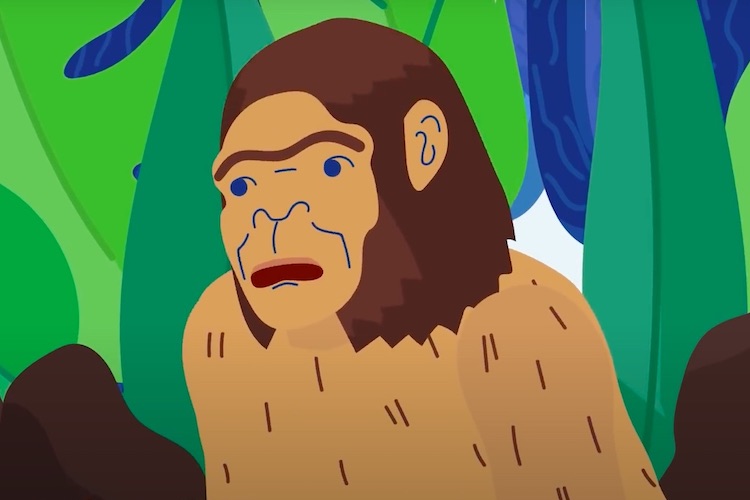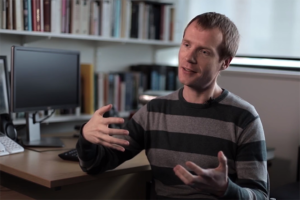Ethnicity in Afghanistan
Anthropologist Thomas Barfield on the role of ethnicity in state-building, nationalism and practical politics ...

In January 2015 Nature published a paper “Levantine cranium from Manot Cave (Israel) foreshadows the first European modern humans“. We have asked the leading author of this research, Prof. Israel Hershkovitz from Tel-Aviv University, to comment on this work.
Manot is a prehistoric cave in the Upper Galilee, Israel, with an impressive archaeological sequence and spectacular speleothems. To date, five excavation seasons (2010–2014) have been conducted in the cave on behalf of the Israel Antiquities Authority, Tel Aviv University, Ben-Gurion University of the Negev and Case Western Reserve University. The cave is situated along the major land route available for ancient humans to travel out of Africa to the Middle East, Asia and Europe. The cave was discovered accidentally in 2008 during construction work. Spelunkers who had rappelled through a newly opened roof of the previously unknown cave that had been sealed for 30,000 years, revealed one of the most important prehistoric cave ever found. Among the most exciting finds was a partial calvaria (skull cap).
The partial cranium, covered in a patina of minerals produced by the wet conditions within the cave, allowed the team’s geologists Miryam Bar-Matthews, Avner Ayalon and Gal Yas’ur from the Geological Survey of Israel, using uranium-thorium dating techniques, to determine that the skull was between 50,000 to 60,000 years old. The skull contained a relatively small brain of around 1,100 milliliters (The modern human brain averages around 1,400 milliliters). Several features of the cranium resembled modern human’s skull (rounded contours, parallel vertical walls, etc), others were more archaic in nature (i.e., typically missing in modern humans), such as the presence of occipital bun (protrusion of the back of the skull) or the suprainiac fossa (oval concavity at the center of the occipital bone). The fossil’s gender is unknown because it’s missing the brow ridge, the one marker for gender differences. A detailed geometric-morphometric analysis shows close morphological affinities with modern African populations on one hand and Early European Upper Paleolithic populations on the other.
The finding of Neanderthals living at other Levantine sites in the eastern Mediterranean region (e.g., Kebara, Amud) places the two human groups in the same area at about the same time. The Manot cave is located in the region where Neanderthals periodically lived, perhaps when ice sheets in Europe forced them to migrate to warmer locales like the Levant region. It is therefore logical to assume that modern humans and Neanderthals were likely to encounter each other while foraging for food. Their identical tool kit suggests sharing and communication.
The characteristics of the Manot Cave partial skull challenges a previous hypothesis (assimilation model) that the two human groups, Neanderthals and modern humans, potentially met some 43,000 years ago somewhere in the European continent and interbreed there. It is clear from our study that many of the archaic traits observed in earlier Upper Paleolithic European skulls (which were attributed to inbreeding with the local European Neanderthals) can already be found in Manot skull and its mother population in Africa (e.g., aduma). In this respect, Manot skull is the first specimen to phylogenetically connect the African and European prehistoric populations.
In 1859 Charles Darwin published his monumental book “On the origin of Species” and the search for the “missing link” had begun. It took anthropologists almost 150 years to get as close as possible to the branching point between man and the great apes (i.e., Sahelanthropus tchadensis, an extinct hominine species that is dated to about 7 million years ago, possibly very close to the time of the chimpanzee/human divergence). These long-time efforts, however, did not give answers to some basic questions fascinated us, humans, since before there was history: who we are, where we came from and how we got here? We weaved wondrous myths that answered those questions definitively, but now we slowly accumulate evidence from the distant past. The Manot skull is the first “connecting link” (i.e., between Africa and the rest of the world) to be found. A great push forward to the search for modern human origin in recent years is due to the availability of new genetic methods that allow us to screen not only modern human genomes, but also ancient ones. Therefore, efforts will be made to try and extract ancient DNA from the calvaria. Excavations will continue in the cave: because the skull is of an adult and we have already located bones from two young individuals, it is certain that there are likely to be more fossils in the cave, they just need to be found. Eventually, we do hope to uncover more of the story behind humanity’s departure from Africa to the world beyond.

Anthropologist Thomas Barfield on the role of ethnicity in state-building, nationalism and practical politics ...

Historian Rory Naismith on the monk Ælfric Bata, the formation of the English monetary system, and the silver ...

Historian Peter Jones on Peter Abelard, logical analysis of the Scripture and what was the role of the univers...